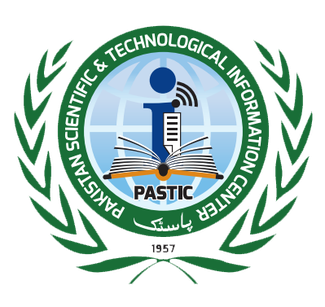NeuroSecure-IoMT: Deep Learning Meets Cyber Defense in the Internet of Medical Things
Keywords:
Intrusion Detection System (IDS), Machine Learning (ML), Deep Learning (DL), Autoencoder, Random Forest, Dimensionality ReductionAbstract
Iintrusion deduction systems (IDS) are crucial to preserving sensitive medical information from cyber threats. However, issues with multi-class intrusion detection include an imbalanced data set, poor accuracy for minority classes, and a lack of flexibility in handling complex real-world situations. To address these issues, we provide a hybrid framework that combines machine learning and deep learning methods to address these problems. The model uses a random forest classifier for anomaly detection after reducing dimensionality using an autoencoder. The Synthetic Minority Oversampling Technique (SMOTE) was used during processing to ensure equitable class representation and reduce class imbalance. A multi-class intrusion detection dataset tailored to healthcare applications was used to thoroughly test the suggested framework, which provides an impressive 99% accuracy rate. In addition to its excellent accuracy, the model addresses important issues in multi-class Intrusion detection by exhibiting remarkable precision for minority classes and consistent performance across all categories. These results highlight the framework's effectiveness in providing dependable and effective normal detection solutions, which makes it ideal for implementation in crucial sectors like healthcare, their accuracy and data security are crucial.
References
I. S. M. Ali Tunc, Emre Gures, “A Survey on IoT Smart Healthcare: Emerging Technologies, Applications, Challenges, and Future Trends,” arXiv:2109.02042, 2021, doi: https://doi.org/10.48550/arXiv.2109.02042.
Eichie FranklinBernardi Pranggono, “Anomaly-Based Intrusion Detection System for the Internet of Medical Things,” Int. J. Informatics Dev., vol. 12, no. 2, 2023, doi: https://doi.org/10.14421/ijid.2023.4308.
A. A. Bernardi Pranggono, “COVID-19 pandemic cybersecurity issues,” Internet Technol. Lett., 2020, doi: https://doi.org/10.1002/itl2.247.
D. N. Celestine Iwendi, Joseph Henry Anajemba, Cresantus Biamba, “Security of Things Intrusion Detection System for Smart Healthcare,” Electronics, vol. 10, no. 12, p. 1375, 2021, doi: https://doi.org/10.3390/electronics10121375.
F. T. S. Khalid Albulayhi, Qasem Abu Al-Haija, Suliman A. Alsuhibany, Ananth A. Jillepalli, Mohammad Ashrafuzzaman, “IoT Intrusion Detection Using Machine Learning with a Novel High Performing Feature Selection Method,” Appl. Sci., vol. 12, no. 10, p. 5015, 2022, doi: https://doi.org/10.3390/app12105015.
N. B. Ayoub Si-Ahmed, Mohammed Ali Al-Garadi, “Survey of Machine Learning based intrusion detection methods for Internet of Medical Things,” Appl. Soft Comput., vol. 140, p. 110227, 2023, doi: https://doi.org/10.1016/j.asoc.2023.110227.
A. Alamleh et al., “Federated Learning for IoMT Applications: A Standardization and Benchmarking Framework of Intrusion Detection Systems,” IEEE J. Biomed. Heal. Informatics, vol. 27, no. 2, pp. 878–887, Feb. 2023, doi: 10.1109/JBHI.2022.3167256.
L. P. W. G. Tehseen Mazhar, Inayatul Haq, Allah Ditta, Syed Agha Hassnain Mohsan, Faisal Rehman, Imran Zafar, Jualang Azlan Gansau, “The Role of Machine Learning and Deep Learning Approaches for the Detection of Skin Cancer,” Healthcare, vol. 11, no. 3, p. 415, 2023, doi: https://doi.org/10.3390/healthcare11030415.
B. A. S. Al-rimy, M. A. Maarof, and S. Z. M. Shaid, “Crypto-ransomware early detection model using novel incremental bagging with enhanced semi-random subspace selection,” Futur. Gener. Comput. Syst., vol. 101, pp. 476–491, 2019, doi: https://doi.org/10.1016/j.future.2019.06.005.
F. A. Aboaoja, A. Zainal, F. A. Ghaleb, and B. A. S. Al-Rimy, “Toward an Ensemble Behavioral-based Early Evasive Malware Detection Framework,” 2021 Int. Conf. Data Sci. Its Appl. ICoDSA 2021, pp. 181–186, 2021, doi: 10.1109/ICODSA53588.2021.9617489.
S. P. T. Pandiaraj Manickam, Siva Ananth Mariappan, Sindhu Monica Murugesan, Shekhar Hansda, Ajeet Kaushik, Ravikumar Shinde, “Artificial Intelligence (AI) and Internet of Medical Things (IoMT) Assisted Biomedical Systems for Intelligent Healthcare,” Biosensors, vol. 13, no. 8, p. 562, 2022, doi: https://doi.org/10.3390/bios12080562.
S. A. Nora El-Rashidy, Shaker El-Sappagh, S. M. Riazul Islam, Hazem M. El-Bakry, “Mobile Health in Remote Patient Monitoring for Chronic Diseases: Principles, Trends, and Challenges,” Diagnostics, vol. 11, no. 4, p. 607, 2021, doi: https://doi.org/10.3390/diagnostics11040607.
N. N. Tamar Levy-Loboda, Eitam Sheetrit, Idit F. Liberty, Alon Haim, “Personalized insulin dose manipulation attack and its detection using interval-based temporal patterns and machine learning algorithms,” J. Biomed. Inform., vol. 132, p. 104129, 2022, doi: https://doi.org/10.1016/j.jbi.2022.104129.
V. C. Parjanay Sharma, Siddhant Jain, Shashank Gupta, “Role of machine learning and deep learning in securing 5G-driven industrial IoT applications,” Ad Hoc Networks, vol. 123, p. 102685, 2021, doi: https://doi.org/10.1016/j.adhoc.2021.102685.
Luke Irwin, “Indiana hospital pays $55,000 after ransomware attack,” IT Gov. a GRCI Solut. Co., 2018, [Online]. Available: https://www.itgovernanceusa.com/blog/indiana-hospital-pays-55000-after-ransomware-attack
Luke Irwin, “FBI Investigates Cyberattack on US Healthcare Systems,” IT Gov. a GRCI Solut. Co., 2023, [Online]. Available: https://www.itgovernanceusa.com/blog/fbi-investigates-cyberattack-on-us-healthcare-systems
J. B. Awotunde, K. M. Abiodun, E. A. Adeniyi, S. O. Folorunso, and R. G. Jimoh, “A Deep Learning-Based Intrusion Detection Technique for a Secured IoMT System,” Commun. Comput. Inf. Sci., vol. 1547 CCIS, pp. 50–62, 2022, doi: 10.1007/978-3-030-95630-1_4.
B. B. Rajasekhar Chaganti, Azrour Mourade, Vinayakumar Ravi, Naga Vemprala, Amit Dua, “A Particle Swarm Optimization and Deep Learning Approach for Intrusion Detection System in Internet of Medical Things,” Sustainability, vol. 14, no. 19, p. 12828, 2022, doi: https://doi.org/10.3390/su141912828.
G. Lazrek, K. Chetioui, Y. Balboul, S. Mazer, and M. El Bekkali, “An RFE/Ridge-ML/DL based anomaly intrusion detection approach for securing IoMT system,” Results Eng., vol. 23, p. 102659, 2024, [Online]. Available: https://www.sciencedirect.com/science/article/pii/S2590123024009149?via%3Dihub
Z. Sun, G. An, Y. Yang, and Y. Liu, “Optimized machine learning enabled intrusion detection 2 system for internet of medical things,” Franklin Open, vol. 6, p. 100056, 2024, doi: https://doi.org/10.1016/j.fraope.2023.100056.
M. I. Theyab Alsolami, Bader Alsharif, “Enhancing Cybersecurity in Healthcare: Evaluating Ensemble Learning Models for Intrusion Detection in the Internet of Medical Things,” Sensors, vol. 24, no. 18, p. 5937, 2024, doi: https://doi.org/10.3390/s24185937.
S.-C. H. Mousa Alalhareth, “An Adaptive Intrusion Detection System in the Internet of Medical Things Using Fuzzy-Based Learning,” Sensors, vol. 23, no. 22, p. 9247, 2023, doi: https://doi.org/10.3390/s23229247.

Downloads
Published
How to Cite
Issue
Section
License
Copyright (c) 2025 50sea

This work is licensed under a Creative Commons Attribution 4.0 International License.




















